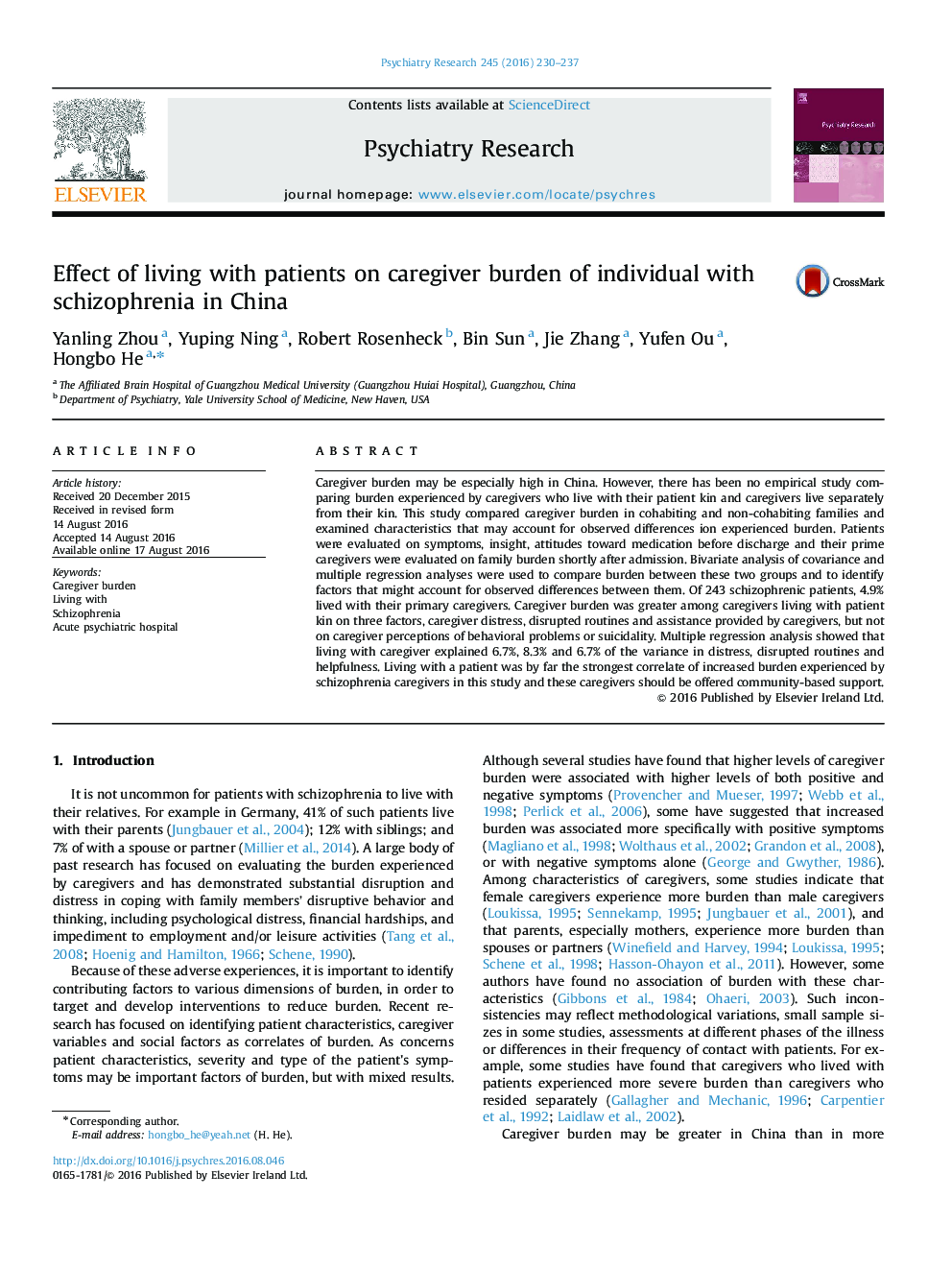| Article ID | Journal | Published Year | Pages | File Type |
|---|---|---|---|---|
| 6812391 | Psychiatry Research | 2016 | 8 Pages |
Abstract
Caregiver burden may be especially high in China. However, there has been no empirical study comparing burden experienced by caregivers who live with their patient kin and caregivers live separately from their kin. This study compared caregiver burden in cohabiting and non-cohabiting families and examined characteristics that may account for observed differences ion experienced burden. Patients were evaluated on symptoms, insight, attitudes toward medication before discharge and their prime caregivers were evaluated on family burden shortly after admission. Bivariate analysis of covariance and multiple regression analyses were used to compare burden between these two groups and to identify factors that might account for observed differences between them. Of 243 schizophrenic patients, 4.9% lived with their primary caregivers. Caregiver burden was greater among caregivers living with patient kin on three factors, caregiver distress, disrupted routines and assistance provided by caregivers, but not on caregiver perceptions of behavioral problems or suicidality. Multiple regression analysis showed that living with caregiver explained 6.7%, 8.3% and 6.7% of the variance in distress, disrupted routines and helpfulness. Living with a patient was by far the strongest correlate of increased burden experienced by schizophrenia caregivers in this study and these caregivers should be offered community-based support.
Keywords
Related Topics
Life Sciences
Neuroscience
Biological Psychiatry
Authors
Yanling Zhou, Yuping Ning, Robert Rosenheck, Bin Sun, Jie Zhang, Yufen Ou, Hongbo He,
